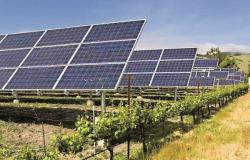It’s a case that has unleashed the press. Elon Musk, entrepreneur with multiple companies and billionaire, decided at the end of February to sue OpenAI co-founded by Sam Altman. Through this action, Elon Musk seeks to force the start-up to respect its initial mission as a non-profit organization and to distance itself from any form of profit that it could reap. He claims, among other things, that Sam Altman, current CEO, and Greg Brockman, its president, convinced him in 2015 to help create and finance the company. The pledge would focus on developing a nonprofit organization focused on combating the competitive threat from Google.
The deal required OpenAI to put its technology “freely available to the public“, according to the complaint filed by Elon Musk. Obviously, everyone’s characters and ideas being what they are, the Tesla boss ended up resigning from the board of directors of OpenAI in 2018. Since then, he has often criticized Microsoft’s links with the start-up This summer, the complaint was withdrawn during the month of July, to finally be relaunched in August Today, the case is in the headlines again: Elon Musk. decided to modify its complaint.
Microsoft in the dock
The amended complaint filed Thursday evening in a federal court in Oakland, California, claims that Microsoft and OpenAI illegally sought to monopolize the market for generative artificial intelligence and drive out competitors. If we find – unsurprisingly – OpenAI and its CEO in the dock, Elon Musk aroused astonishment by adding the Redmond firm, as well as the co-founder of LinkedIn, Reid Hoffman, and the former member of the board Director of OpenAI and Vice President of Microsoft, Deannah Templeton, to the list.
“Never before has a company gone from a tax-exempt charity to a $157 billion for-profit market-crippling gorgon – in just eight years,” can we read in the complaint. She demands the cancellation of OpenAI’s license with Microsoft and forces them to part with the winnings “ill-gotten”. Without delay, OpenAI said in a statement that the latest trial “is even more unfounded and disproportionate than the previous ones”. Microsoft declined to comment. For the record, Microsoft has invested nearly $14 billion in OpenAI, including a stake in the latest funding round completed by the start-up.
More charges added
The expanded complaint further states that the two companies violated antitrust law by conditioning investment opportunities on agreements not to deal with the companies’ rivals. She claims the companies’ exclusive licensing agreement amounted to a merger lacking regulatory approvals.
Additionally, the amended filing also adds other plaintiffs: Shivon Zilis, executive director of Neuralink and former OpenAI board member, and Musk’s AI company xAI. According to the amended complaint, Shivon Zilis, who resigned from OpenAI’s board of directors in 2023 after serving as a member for approximately four years, has “injured employee” status under the California Corporation Code. She allegedly repeatedly raised concerns about deals OpenAI made internally, which fell on deaf ears – and which echoed those of Elon Musk, according to the complaint.
Shivon Zilis worked as a project director at Tesla from 2017 to 2019 in addition to leading Neuralink research. However, it should be noted that Shivon Zilis has been Elon Musk’s partner for several years and she is also the mother of three of Musk’s children, Techno Mechanicus and the twins Strider and Azure.
Elon Musk is gaining momentum on the political scene
Along with the amendment of this complaint, Elon Musk has gained new prominence as a key force in the incoming administration of United States President-elect Donald Trump. The latter has indeed charged the billionaire with a mission that is special to say the least: he must, alongside Vivek Ramaswamy, direct the “State Department for Government Efficiency”, aka the DOGE.
Very real, this ministry will work to reduce excessive regulations, expenses deemed unnecessary and sweep away bureaucracy. A position to which Elon Musk was able to access after patiently supporting Donald Trump, notably with millions of dollars donated to the latter’s Republican campaign. The billionaire could therefore use his position to attack OpenAI and Microsoft in the future.
Selected for you






